A Community Health Needs Assessment (CHNA) is a vital tool for hospitals, healthcare organizations and community stakeholders to evaluate and address the health needs of their populations. This guide provides a comprehensive overview of the CHNA, including its purpose, requirements, data analysis and examples.
What is a Community Health Needs Assessment?
A CHNA is a systematic process that identifies key health issues and needs within a community. It serves as a foundation for healthcare providers and policymakers to make informed decisions that improve health outcomes. Learn more about the fundamentals of a CHNA in our detailed guide: What is a Community Health Needs Assessment?.
The purpose of a Community Health Needs Assessment
The purpose of a CHNA is to:
Identify significant health issues
Determine prevalent health conditions affecting the community.
Recognize disparities in healthcare access and outcomes.
Highlight social determinants impacting community well-being.
Prioritize resources and funding
Allocate healthcare funding to the most pressing issues.
Develop programs that address community-specific health concerns.
Optimize resource utilization for maximum impact.
Develop evidence-based interventions
Use data-driven insights to create targeted health programs.
Implement preventive measures that reduce long-term healthcare costs.
Strengthen community partnerships to enhance healthcare delivery.
Ensure compliance with federal and state regulations
Meet 501(c)(3) status requirements for nonprofit hospitals.
Align with the Affordable Care Act’s CHNA mandates.
Ensure transparency by making findings publicly available.
For a deeper understanding, explore our article: The purpose of a CHNA.
CHNA requirements for hospitals
Nonprofit hospitals are required to conduct a hospital Community Health Needs Assessment every three years to maintain their 501(c)(3) status. This includes:
1. Identifying and engaging community stakeholders
Collaborate with local health departments and organizations.
Involve community members to ensure diverse perspectives.
Conduct public forums and surveys for community input.
2. Collecting and analyzing health needs data
Gather quantitative data from public health sources.
Conduct qualitative research through interviews and focus groups.
Assess trends in disease prevalence and healthcare utilization.
3. Prioritizing health needs and developing an implementation plan
Rank identified health needs based on severity and impact.
Set measurable goals to address key issues.
Create actionable strategies for intervention and improvement.
4. Making findings publicly available
Publish a community health needs assessment report on hospital websites.
Share results with stakeholders through presentations and reports.
Ensure accessibility for all community members.
Learn more about the regulatory framework in our article: Bridging the gap: Community Health Needs Assessment (CHNA) and health services.
Community Health Needs Assessment data analysis
Effective Community Health Needs Assessment data analysis involves:
Gathering qualitative and quantitative data
Collect survey responses and patient feedback.
Analyze hospital admission and treatment data.
Compare local statistics with national health trends.
Using social determinants of health (SDOH) insights
Assess how factors like income, education and environment affect health.
Identify gaps in healthcare access.
Develop targeted strategies for vulnerable populations.
Leveraging tools like Z-codes to track community health trends
Use ICD-10 Z-codes to document social risk factors.
Monitor trends in social determinants affecting patient health.
Strengthen partnerships between healthcare providers and social services.
Discover how Z-codes enhance CHNA efforts: The Z Code Push and Pull: Supercharge Your Strategy.
Developing a Community Health Needs Assessment report
After conducting a CHNA, organizations must compile findings into a report. A well-structured CHNA report should include:
Executive summary
Provide an overview of key findings.
Summarize major health concerns and priorities.
Highlight critical data points from the assessment.
Methodology
Explain data collection techniques.
Describe stakeholder engagement processes.
Outline prioritization methods used.
Key health issues identified
Present top community health challenges.
Discuss disparities in access and outcomes.
Provide supporting data and statistics.
Prioritization process
Detail the criteria for selecting priority health issues.
Explain community involvement in the decision-making process.
Show alignment with organizational goals and resources.
Actionable recommendations
Suggest specific interventions for improving health outcomes.
Propose funding strategies and partnerships.
Outline a timeline for implementation and evaluation.
Explore best practices in our article: How to conduct a Community Health Needs Assessment: 3 keys to simplify the process.
Additional CHNA resources
A Community Health Needs Assessment (CHNA) is essential for improving healthcare outcomes and ensuring regulatory compliance. By leveraging community assessment data, hospitals and community organizations can create impactful health initiatives.
For additional resources, check out our full collection of CHNA content:
By following this guide, you can better conduct a CHNA that meets requirements and drives meaningful change in healthcare.
How DataGen’s CHNA Advantage™ can enhance your process
Performing a CHNA can be a complex task. DataGen’s CHNA Advantage™ solution simplifies the process by providing:
Comprehensive data analysis tools: Access to integrated datasets for in-depth analysis. Plus, discover user-friendly dashboards for data visualization.
Evidence-based reporting frameworks: Get templates for creating compliant CHNA reports and expert guidance on aligning reports with regulatory standards.
Strategic insights for decision-making: Obtain insights on the best analyses to demonstrate impact to leadership and your community.
Learn how our platform can support your CHNA efforts: DataGen CHNA Advantage™.


Comments
Post a Comment